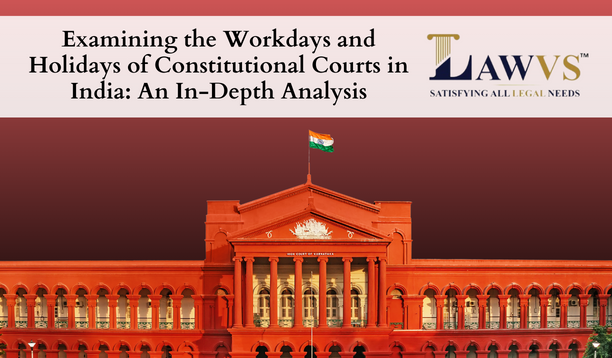In recent years, there has been a consistent call for Indian courts to either reduce or eliminate vacations due to the significant backlog of cases and a shortage of judges.
A petition was filed in the Bombay High Court urging a reconsideration of the vacation period, citing it as a violation of litigants' fundamental rights. This matter is currently pending.
Additionally, a Parliamentary Committee suggested that judges take leave at different times throughout the year to ensure continuous court availability. However, judges have often countered such demands, providing various reasons.
In August 2022, former Supreme Court judge Justice DY Chandrachud noted that judges dedicate time beyond official working hours for research and judgment writing. Justice Sanjay Kaul echoed this sentiment, emphasizing the extensive hours judges invest in their duties when discussing the potential reduction of breaks.
Justice GS Patel of the Bombay High Court pointed out that judges work long hours, stating he works "19 hours a day" when declining an urgent hearing request. The recent comment from Justice Prathiba Singh of the Delhi High Court highlighted the demanding nature of judges' roles, noting that they often put in 14 to 15 hours a day, making it challenging to maintain work-life balance.
Despite judges being overworked, eliminating vacations may not be the ideal solution to address the challenges within the justice system. However, the number of working days remains a crucial factor in addressing the backlog of over 4 crore pending cases.
To assess the significance of court working days, an examination of the calendars of the Supreme Court of India and specific High Courts for the year 2023 was conducted. The term "court working days" excludes days when the court registry is open and special sittings for urgent matters.
The analysis considers only holidays declared at the start of the year, excluding those announced in response to emergencies or calamities. Notified holidays encompass nationwide celebrations, national holidays, state-specific festivals, and local holidays.
Supreme Court:
The Supreme Court, open for just under 200 days a year, has the fewest court working days among all constitutional courts. It observes a longer summer vacation (6 weeks) and a 2-week winter break.
High Courts:
Most High Courts operate for a little over 200 days a year. In 2023, the Rajasthan High Court had the highest number of working days (214), followed by Madhya Pradesh and Karnataka with 212 working days. Some High Courts, like Calcutta and Allahabad, had 211 working days, while others, including Bombay, Delhi, Madras, Kerala, Gauhati, Gujarat, and Punjab & Haryana, had 210 working days.
The analysis also highlights variations in the number of holidays among High Courts, with considerations for festivals, vacations, and additional holidays declared close to weekends.
Ultimately, discussions on reducing or eliminating court vacations can only progress when courts are operating at full-sanctioned strength. Current vacancies lead to an increased workload on existing judges, emphasizing the need to address staffing shortages to improve the efficiency of the justice system.




